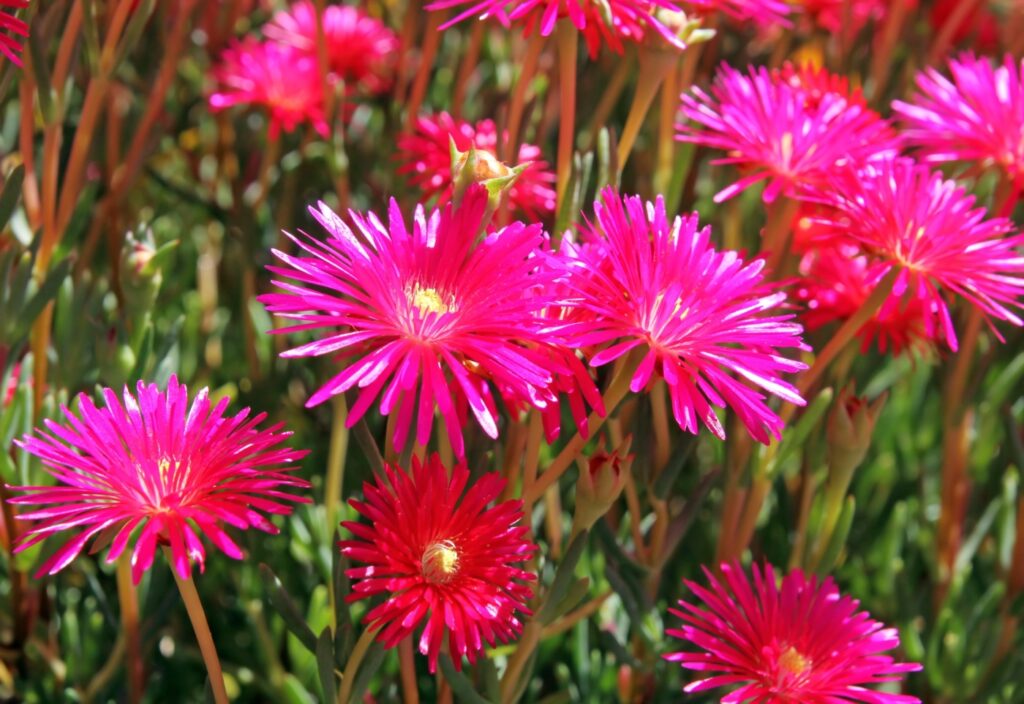
1. As we gear up for the growing season, it is essential to apply a 2-3 inch layer of mulch throughout the garden in order to minimize frequency of watering. There are ten locations throughout the city of Los Angeles where city residents can pick up free, fully composted mulch. Find these locations at lacitysan.org/freemulch. A small pickup truck holds 1-1.5 cubic yards of mulch and a large pick up holds 2-3 cubic yards. One cubic yard will cover 150 square feet with a 2-inch layer of mulch or 100 square feet with a 3-inch layer. For free wood chip mulch delivered to your door, visit getchipdrop.com. If you know of any other source of free mulch, please let me know so I can inform readers of this column about it.
2. Plant summer blooming bulbs, corms, tubers, and rhizomes, including dahlia, gladiolus, canna, nerine lily, stargazer lily, calla lily, daylily, freesia, tuberous begonia, caladium, and elephant ears (Calocasia). I have enjoyed consistent success with bulbs ordered from tulipworld.com.
3. Plant seeds of spring and summer vegetable crops: tomato, eggplant, bell and chili pepper, squash, and melon. It is easiest to germinate these seeds in small containers and then, once they are well-rooted, transplant them into the garden. Use dixie cups, styrofoam cups, or recycled yogurt cups for this purpose, as long as you poke drainage holes in the bottom. Plant two or three seeds per cup and keep the strongest seedling. When it comes to root crops, however, such as radishes, carrots, and beets, as well as corn, beans, lettuce, and cucumbers, you are better off planting their seeds directly in the garden bed since their seedlings do not transplant well. Still, you can plant seeds of all types in soil blocks made with a device that forms small blocks out of your planting mix. These blocks can then be easily transplanted into the garden without disturbance of their roots. To learn more about such a device, considered indispensable by some gardeners, search “soil blocker” on the Internet.
4. “Raised Bed Gardening” (Cool Springs Press, 2022) by Calikim, encourages us to take the easy way out when planting. The raised beds whose building instructions are detailed here are generally constructed out of wood. However, concrete blocks, galvanized metal tanks, rocks and stone, and even certain fabrics can all be utilized in creating raised beds. The beauty of raised beds is that you bring in the soil of your choice. Not only do you get a guaranteed fast-draining soil mix, but the labor of digging up your native soil is avoided. You also do not bend your back as much as when you garden at ground level.
5. If you are looking for electric spring flowers, consider purple ice plant (Lampranthus productus). Unlike other ice plants, however, this species blooms on and off throughout the year, although it blooms most prolifically, and with a brilliance unmatched by any other plant, in the spring. And if you are looking for cacti or succulents to bring into your garden based on their flowers, most of which are showing now, pay a visit to the Huntington Botanical Gardens in San Marino, whose Desert Garden is home to the most noteworthy collection of such plants on this continent. The South Coast Botanic Garden in Palos Verdes has a nice collection of succulents, too. Another noteworthy succulent site, of which I was informed by Donna Lynn Foster, may be found at Rancho Los Alamitos in Long Beach, where admission is free.
Please send questions, comments, and photos to joshua@perfectplants.com. Access photos of blooming plants on Instagram via thesmartergardener1.
